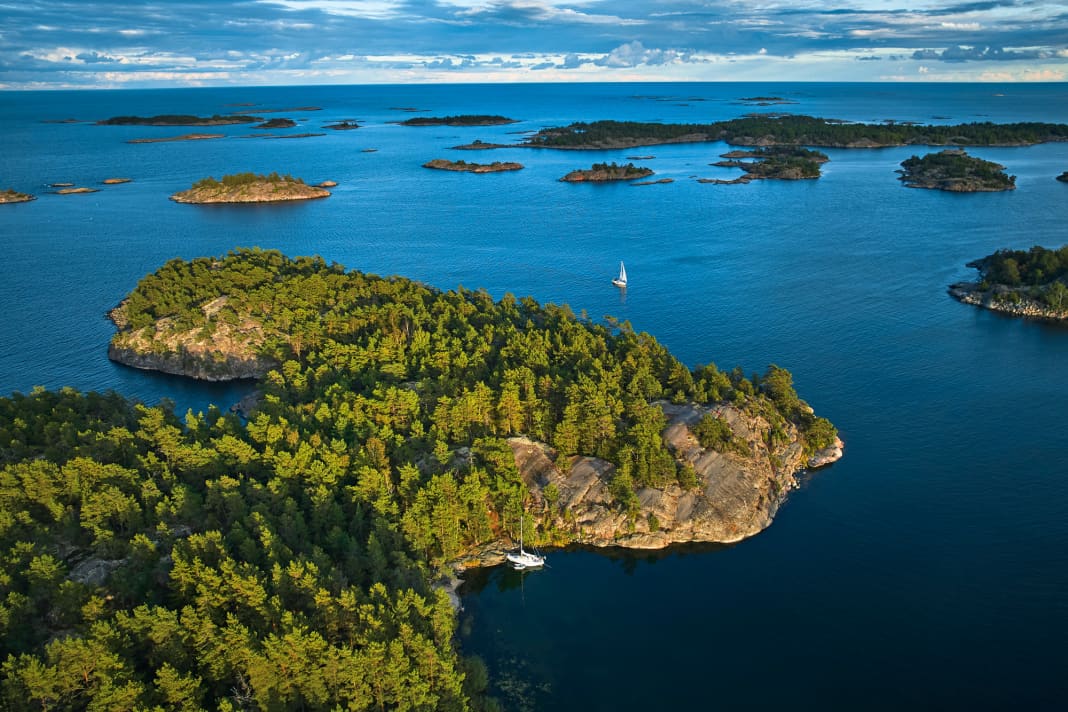





In this article:
When sailors from the German Baltic coast plan a trip to Stockholm and back during a typical holiday window, this usually means closing their eyes and clocking up the miles. After all, it is around 400 nautical miles to the Scandinavian metropolis, depending on the port of departure. For many, this has its appeal. The other option is to immerse yourself in a parallel universe. And this is how it works: Check the wind direction, head for an archipelago, clear the stern anchor and slowly feel your way towards the rocks. When the bottom is deep enough and a rock invites you to get out, reverse out again, drop the anchor, bring the boat back to the rock and attach the bow lines to hooks or eyelets. And then? Everything else happens by itself. Take a deep breath, watch the grey heron fishing, inhale the smell of pine trees and swim leisurely through the bay. Then doze on a warm stone and let the sun dry you off. Welcome to the archipelago paradise!
If there is enough food in the galley and the water tank is still well filled, the days on a skerry can pass carefree. The journey becomes the proverbial destination.
And there are thousands of these places on the 180 nautical mile stretch between Kalmar and Stockholm. When it's time to discover a new cruising destination, the journey continues: a bathing beach for the little ones, an island with a pilot tower far from the fairway or a café where you can pay homage to the fika - the Swedish coffee break is a social institution - including an overdose of kanelbullar, the legendary yeast pastry with cinnamon and cardamom. Of course, no holiday crew ever arrives in Stockholm at this speed. But it is pure relaxation and adventure. If you're worried about getting lost in the archipelago sea, you'll find two dozen tips below.
The best sailing tips for Sweden's east coast
We present these sailing destinations:
- 1 Kalmar/Kalmarsund
- 2 Pataholm/Saltor
- 3 Solberganäset
- 4 Furö
- 5 Blå Jungfrun
- 6 Figeholm
- 7 Äspklubben and Kråkelund
- 8 Älö/Lyckfjärden and Uvholmen
- 9 Idö/Norra Bockholmen
- 10 Huvudet Händelöp Fiskehamn
- 11 Västervik
- 12 Jungfruskär/Tvarholmarna
- 13 Stora Askö/Flatvarp
- 14 Åsvikelandet/Kolmosö
- 15 Gubbö
- 16 Harstena
- 17 Lundarna
- 18 Hävringe
- 19 Stendörren's nature reserve
- 20 Fifång
- 21 Trosa
- 22 Draughts channel
- 23 Sågviken and Raholmsundet
- 24 Nynäshamn
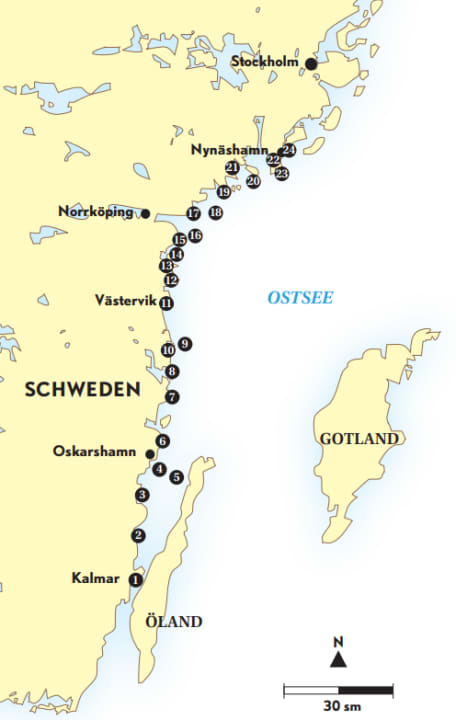
1 Kalmar/Kalmarsund: Peace and festivals
The historic harbour town with the protected Gamla Hamnen guest harbour near the old town and the castle is located directly on the Kalmar Sound, where the bridge stretches far out to Öland. Coming from the sound, the industrial cityscape can seem daunting at first, but behind it lies the beautiful city centre on the island of Kvarnholmen with its winding alleyways and many restaurants, cafés and pubs. In the summer months, the town centre comes alive with live music, theatre and markets. The castle, which dates back to the Middle Ages, is just a few minutes' walk away. Nordic history was written here: the Kalmar Union was founded in 1397, bringing peace to Sweden, Denmark and Norway for more than 120 years.
The facilities in the harbour are very good. A shopping centre and restaurants are right on the quay, and there are two large sanitary facilities with a sauna for sailors.
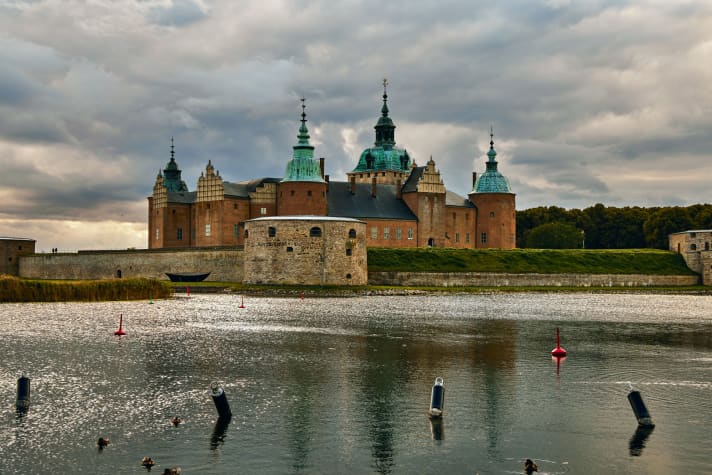
2 Pataholm/Saltor: atmosphere like in the old days
The picturesque village has managed to retain its 19th century character, and the well-preserved wooden houses around the market square are a feast for the eyes.
Freshly baked cakes and other delicacies can be found in the "Förlig Wind" café, named after one of the last ships to be built at the local shipyard. The local history museum (Hembygdsgårdar) collects interesting facts about the history. There is no marina or jetty. Anchoring is possible half a mile from the village, after which it becomes very shallow and small grassy islands limit the passage. The old jetty in the south of the village in front of the former sawmill can be used for pleasure craft for a fee. With stern anchor or alongside. Electricity available, but no other facilities or WC. The neighbouring Saltor peninsula to the south-east has great hiking trails and a park-like tree population.
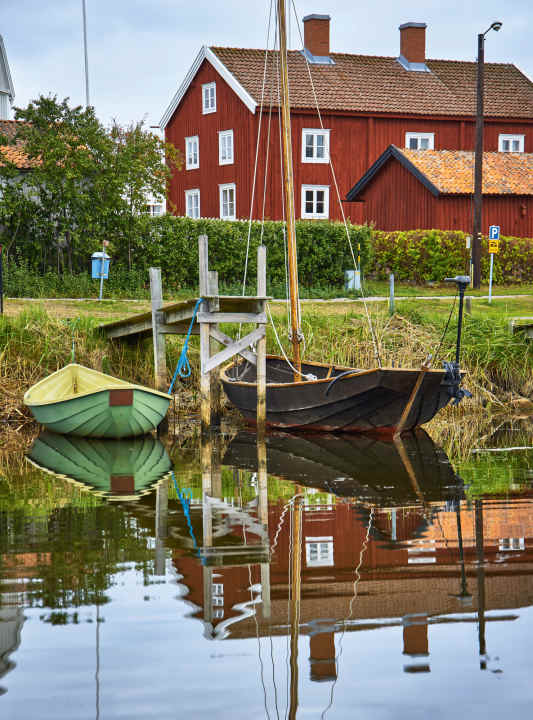
3 Solberganäset: quarry for German buildings
Where over 100 years ago pink-coloured granite blocks were cut out of the rock for Germany and the USA, today you can see impressive evidence of pre-industrial craftsmanship. The hiking trail of the "Stenhugagar" open-air museum leads through rugged rock faces and scree slopes, text panels and photos explain the work of the blasting teams and stonemasons, and remnants of the rail network for loading still exist.
Yachts with a draught of up to 2.50 metres can moor in Själevik, which runs in a north-south direction - anchor or moor on the rocks. The bay is surrounded by conifers and is sheltered from all wind directions. The narrow entrance to Själevik requires full attention.
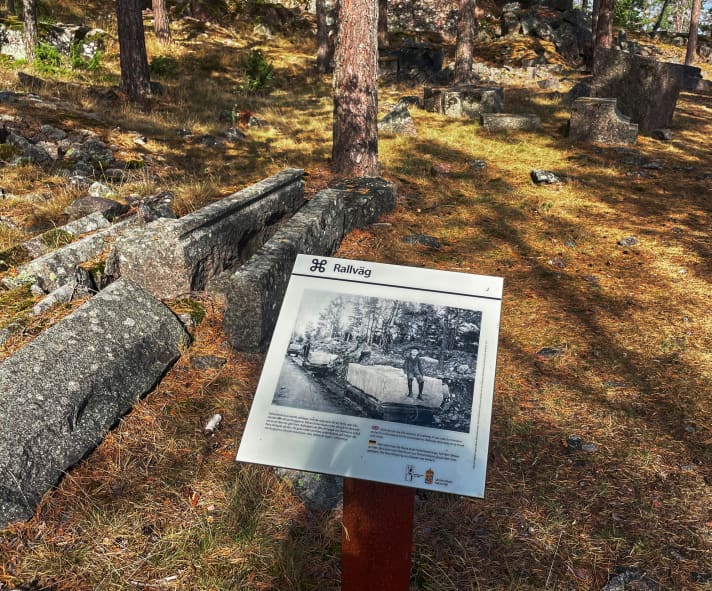
4 Furö: breeding ground with a premium view
An unusual, flat pile of sandstone that barely protrudes from the sea. From here you have a fantastic view of the island of Blå Jungfrun. There is a bird reserve in the eastern part of this exotic-looking island, which is closed during the breeding season. The island is dominated by low-growing juniper bushes instead of the dense coniferous forests that are common in the archipelago. In addition to a few summer houses, it is also home to artefacts from historical settlements dating back to the Bronze Age. You can see burial sites, the foundations of a medieval fishing village and an artificial canal.
Pilots were stationed here until the 1960s, and the Finnrevet beacon warns shipping of the reef of the same name. The shoal used to be the undoing of many ships. Landing is only possible in the small southern bay. Moor there alongside or with a stern anchor at the old pilot landing stage. The other jetties are reserved for local water sports enthusiasts and fishermen. There is no provisioning, but free places are rare in the high season.
5 Blå Jungfrun: A visit to the mermaids
At first glance, it may seem like a mirage, but the granite boulder with a height of 86 metres in the middle of northern Kalmar Sound is real. As Blåkulla, blue hill, the island is part of many sagas and legends. This is where the Easter witches are chased away. Mermaids and divine beings also frolic on the smooth rock. The island can only be approached in very moderate weather conditions, and even then the swell from the Gotland ferry can cause unrest at the mooring. Anyone anchoring here should always use a triple line for the harness because of the rocky bottom. Alternative: park the yacht in Oskarshamn and take the ferry across. Once you reach the island, every effort is rewarded: the small national park is characterised by circular walks with far-reaching views and settlement remains from the Stone Age.
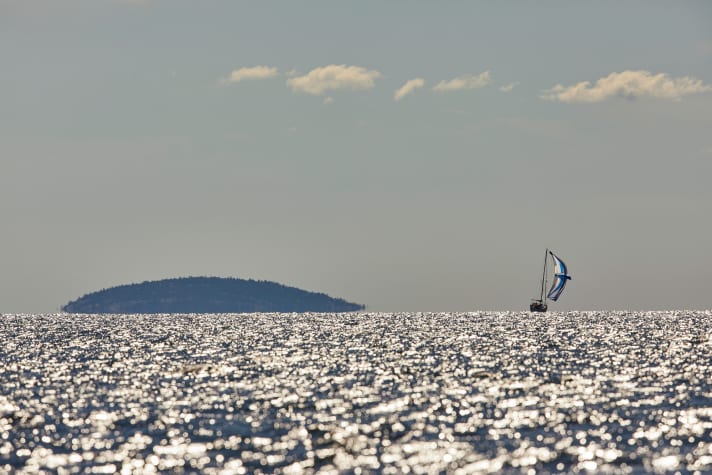
6 Figeholm: Provisioning for boat and crew
Red warehouses and a maritime museum bear witness to the small town's former seafaring history. A cosy harbour behind offshore skerries offers shelter in all wind directions. Supplies of food, diesel and yacht accessories are available. When entering the harbour from Kalmarsund, it becomes narrow and shallow in places, but the fairway is safe to navigate thanks to the buoyage. If you prefer to anchor, you can take out your gear in Tväggesholmen. This is a deep bay about 1.4 nautical miles south-east of the harbour.
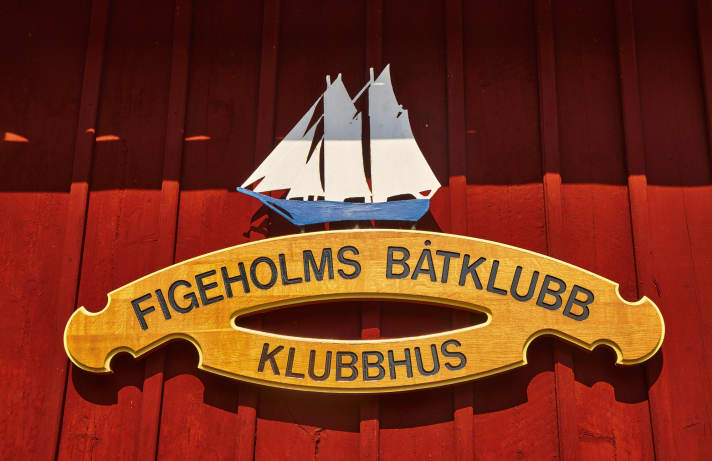
7 Äspklubben and Kråkelund: a break at the fairway
A small rocky archipelago near the north-south fairway in the outer archipelago. Depending on the wind, there are good places to anchor everywhere. Otherwise, you can moor at a buoy or directly on the rocks.
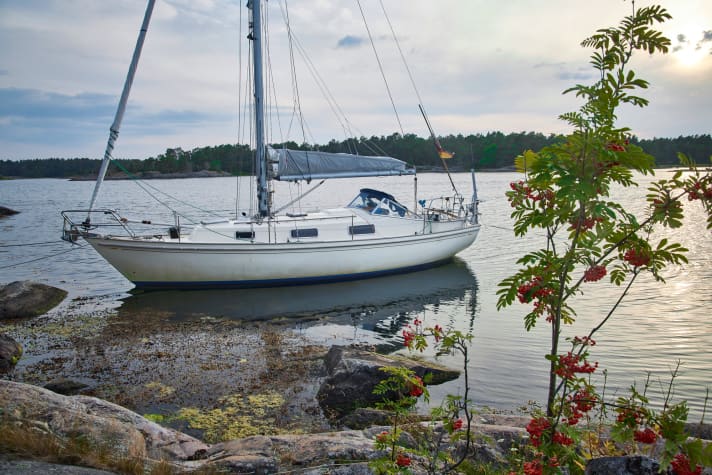
8 Älö/Lyckfjärden and Uvholmen: natural harbour at its best
The Lyckfjärden is Abraham's bosom made of stone, the entrance is very narrow and must be navigated with a watchful eye. The reward is a multitude of beautiful and safe spots on the rocks or at anchor. An old farm and holiday homes line the shore. The island area east of the island of Älö is more secluded, with a natural granite jetty at Uvholmen where yachts can moor alongside.
9 Idö/Norra Bockholmen: Pilot view over the island garden
Idö's old pilot harbour is a quiet place for the boat. The crew can make their way around the island or enjoy the view from the old pilot tower. The popular restaurant "Skärgårdskrog" is perched on rocks in the harbour, where there are also showers and toilets. There is a small shop-café right by the harbour. The island itself offers little else in the way of good anchorage or rocky moorings, but with a little experience you can always find a spot. For example, in the shallow channel between Norra Bockholmen and Mellan (draught only up to 1.50 metres!).
10 Huvudet Händelöp Fiskehamn: tranquil original
A quaint little fishing harbour where the cutter captains still call the shots. There is some space for yachts alongside the pier or, by arrangement, on a fishing vessel. If you have a draught of less than 1.70 metres and manage to get a place, consider yourself lucky: The skerry is almost on the open sea and has great bathing spots and hiking trails. No facilities, just a toilet. A good natural harbour in the north of the island, except in northerly winds.
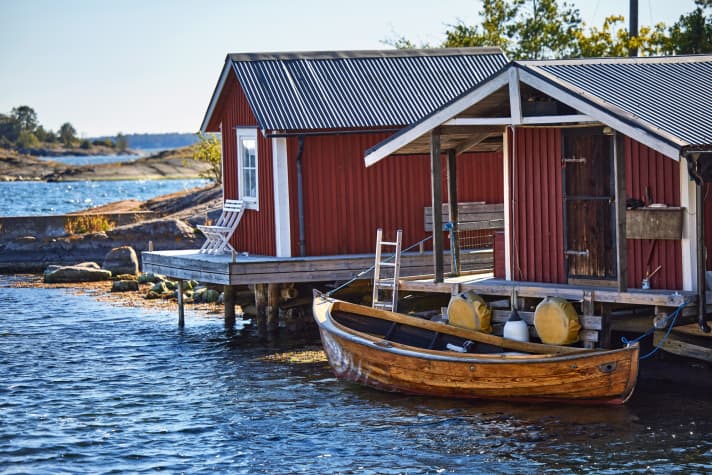
11 Västervik: festival city by the water
Surrounded by around 5,000 islands in the Tjust archipelago, Västervik lies hidden from the sea behind fir trees and granite. A trip to the town through Lucernafjärden can be made under sail, the fjord is wide enough for cruising. Directly in front of the marinas close to the town, however, it becomes narrow between two islands, and at the latest at the castle ruins and hotel complex - owned by ABBA member Björn Ulvaeus - there is no way through. Unless the bascule bridge opens and clears the way. But there is no need to sail any further, as the modern Slottsholmen Marina with its excellent facilities is an ideal place to moor. A stroll through the town centre, stocking up on provisions, visiting a museum, going for a swim - it's all possible from here in just a few minutes. The Visfestivalen, one of the oldest music festivals in Sweden, is famous. Every year in mid-July, well-known bands perform and make the castle ruins tremble.
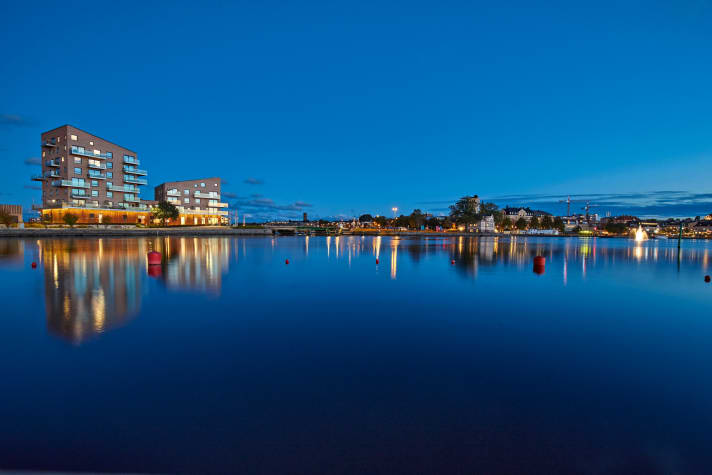
12 Jungfruskär/Tvarholmarna: small but nice and safe
Situated on the inner fairway, this archipelago boasts a number of protected natural harbours. There is a circular route on the larger Jungfruskär and the southern Tvarholmarna offers great climbing opportunities. There are no facilities of any kind.
13 Stora Askö/Flatvarp: Excursion into nature
If you want to get ashore quickly and easily after a long day of sailing, this is a good spot. You can moor alongside the western part of the fishing pier in rustic surroundings. The forest landscape is best explored on the small paths. Or unpack your bikes and set off directly from the boat on tarmac paths.
14 Åsvikelandet/Kolmosö: Hiking with a view of the water
Between the Kolmosö peninsula and the small island of Trollholmen there is a deep bay with good ground for anchoring. Or you can moor your boat directly on the rocks. The nature reserve offers firewood, a barbecue area and a dry toilet free of charge. A 14-kilometre circular trail along the islands and fjords provides plenty of exercise. If you hike westwards into the Torrö nature reserve, you can already see the next anchorage in Ålgårdsfjärden. The small fishing village in the south of Torrö is beautiful.

15 Gubbö: great views in the archipelago
The best spot in Gryts Skärgård is the granite rock with the old stone beacon. There used to be a beacon here to facilitate navigation in the archipelago. Apart from the former beacon house at the top of the sea mark, there are no buildings. The archipelago offers good moorings on the rocks or at anchor in Södervik, in the northern larger bay of Gubbö Kupa and on the eastern flank of the island. A varied landscape including a small inland lake and many bathing spots. You could easily spend an entire summer holiday here.
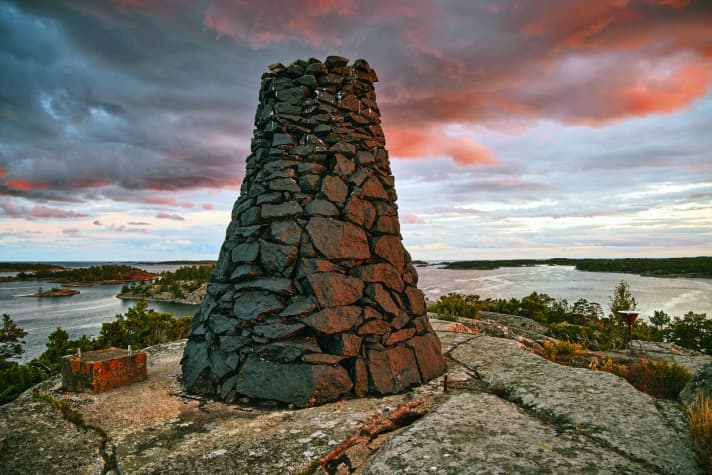
16 Harstena: the mother of all archipelagos
Narrow fjord and red houses, green fir trees, lush meadows and coloured granite: the island in Gryts Skärgård has everything you need for a holiday in Sweden. The small guest harbour in Lindholmsundet can only accommodate about a dozen yachts, but there are moorings in front of the narrow passage in Mörka Hålet and some suitable spots for archipelago hooks on the rocks. A walk through the picturesque village on the east side of the island should have one main destination: the island bakery. The master baker, based in Gothenburg, has mastered the production of French country breads and succulent fruit tarts as well as the world-famous Swedish kanelbullar (cinnamon buns).
In the "Loftet" restaurant right next to the jetty, on the other hand, things get savoury: smoked herring, bouillabaisse, half lobster - all very tasty! Guests are guaranteed to be full and the ship's till emptied. To the north of Harstena lies the sheltered Flisfjärden, more of an inland lake than a bay, with plenty of rocky outcrops and anchorages. From here it is only a stone's throw to the bakery and the village. As the archipelago is also a real highlight for local sailors, it gets very busy in the season. But thanks to the favourable coastline with many small and large inlets and sufficient water depths, there is always a place to be found.
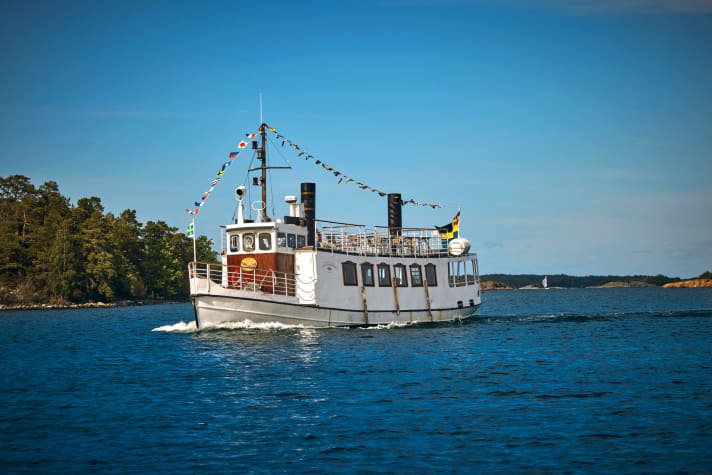
17 Lundarna: Granite bathing platform
To the north-east of Arkösund lies the elongated island of Lunda with an impressive, polished east coast facing the open sea - an unusual sight for the eastern archipelago. The granite slabs lead gently into the water, as comfortable as a bathing beach. Different types of rock bring out the bright colours even on cloudy days. The green vegetation strip of grass, reeds and trees on the sheltered western side is a playground for seabirds of all kinds. The offshore islands offer good protection from westerly winds, whether at anchor or on the numerous rocky jetties.
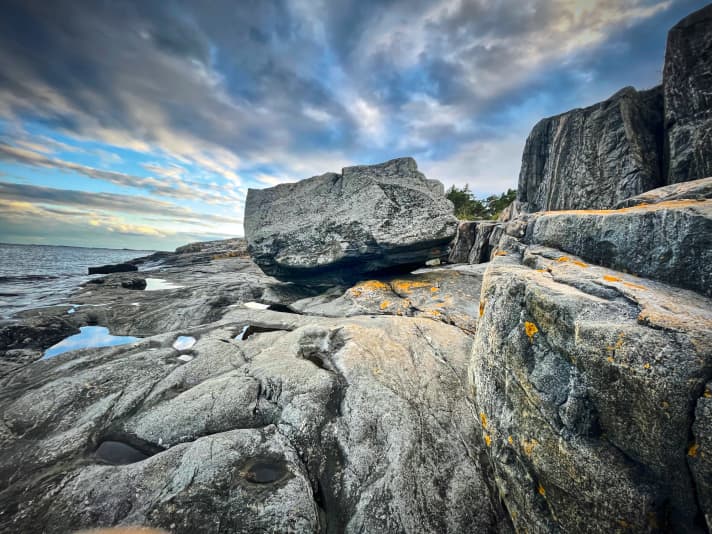
18 Hävringe: Outpost in the sea
A tall radio mast and an angular red and white tower loom over the Kimm: Hävringe, far out off the Oxelösund archipelago, has been a fishing harbour since the 15th century. Later, pilots came to develop the harbour. Although the island is exposed to the elements, the small harbour offers very good protection and space for around six guest boats. Moor behind the pier head on the port side in front of the stern anchor. All other berths are reserved for local skippers. There is no provisioning, the wide view of the sea, countless bird species and the rustic fishermen's huts on the island make for an unforgettable experience. A donation is requested to maintain the jetty.
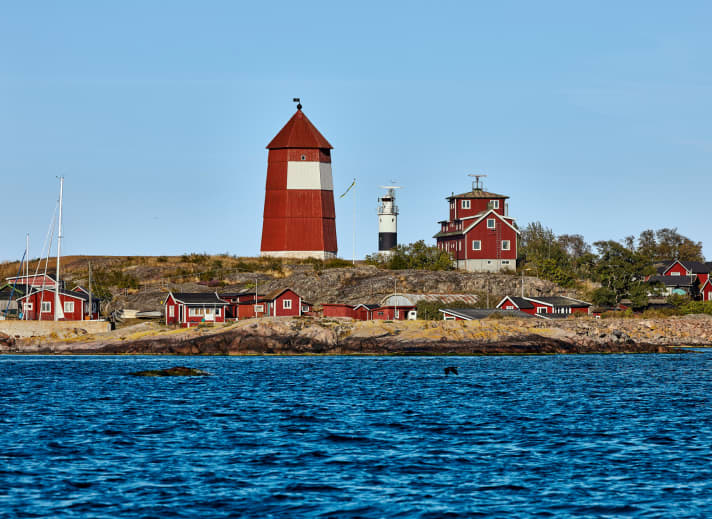
19 Stendörren's nature reserve: You have to cross these bridges!
If the crew feels like going ashore, the skipper can decide: Consumption in Nyköping or a special holiday in the archipelago. Arguments in favour of the nature reserve are the hiking trails along the coast with adventurous detours over suspension bridges onto the archipelago or fireplaces with firewood lying ready. A visit to the Naturum provides further variety. Built above the Aspnäset jetty in the shape of a ship with a sail, it houses natural history exhibitions about the fauna, flora and ecosystem of the archipelago.
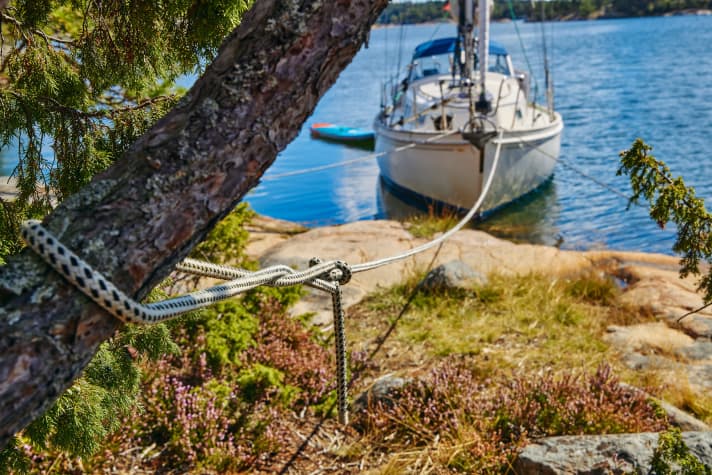
20 Fifång: a park in the Baltic Sea
An ideal natural harbour and a beautiful park-like landscape with a tree population of ancient oaks. Plus wild animals such as moose, deer and hares. All this makes this archipelago so special.
In 1999, Fifång and the surrounding islands were declared a nature reserve. The Södertalje Sailing Club, which also runs the small harbour, took over the monitoring and maintenance of the reserve. Mooring fees are paid voluntarily and include the use of dry toilets, rubbish bins and a sauna. On Midsummer's Eve, the boat club organises the very popular Midsummer Festival here. The northern bay of Fladen has good anchorage at a depth of three metres, and numerous rocky moorings are also available. The southern bay of Sörviken, on the other hand, offers space on jetties for around 100 boats. Anchoring is also possible here, but as far inland as possible in the bay to avoid swell. It can be uncomfortable in south-westerly winds. In the high season, Fifång is a turbulent place. Around 3,000 Swedish and foreign boats moor here. Navigation to the island is easy if you are coming from the east or south. In the south-west, however, the water is shallow.

21 Trosa: from fishing village to film set
First the fishermen lived here, then the summer holidaymakers from Stockholm came, and now the small town with its romantic wooden houses is the perfect film set for Inga Lindström's romantic dramas. But the town wasn't actually located here in the past. As a result of land uplift after the Ice Age, the fishermen could no longer reach the sea via the river. They therefore moved closer to the coast. Now, however, the inhabitants felt as if they were living at the "end of the world" - an epithet that still adorns the fashionable village today. Sailors find an exciting contrast to the lonely nature of the archipelago here. They can plunge into the hustle and bustle without a care in the world. Trosa attracts visitors with its cafés and restaurants, boutiques and libraries. And in the summer months there are concerts and markets. The boat is safely moored in the guest harbour at the stern buoys. The service facilities are modern, with shops for every need within walking distance. A boatyard with engine service and a yacht accessories shop can be found on the other side of the river. Ships with a draught of more than 1.90 metres go alongside at the western jetty at the mouth of the river.
22 Dragetskanal: Shortcut through the rock
A good connection between Södertälje and Nynäshamn is this very narrow canal, 200 metres long and only about seven metres wide. Navigable for boats with a moderate draught. The charts show the depth of the canal as 1.50 metres, but the signs at the entrances indicate 2.00 metres. A local skipper reports that he has passed through the canal with a draught of 2.20 metres.
The shortcut is not only a breathtaking sailing experience, it also has a long history in the region's coastal seafaring. In the 13th century, the water level was around three metres higher and Draget is mentioned as a strait between the island and the mainland. Sailing ships were able to pass through this point and thus avoid the longer and more dangerous passage around Landsort. Land uplift and siltation later made the passage impassable, which is why the strait was dredged in the middle of the 19th century and later blasted deeper by the navy. The area around the canal and the island has many sheltered bays and moorings.
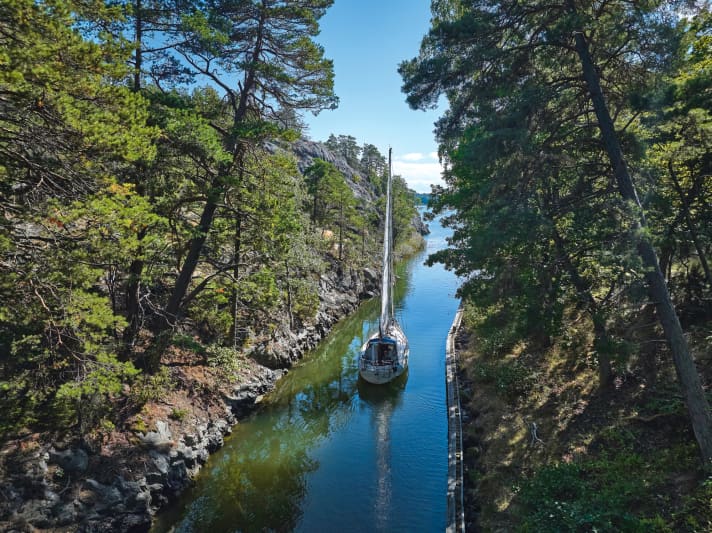
23 Sågviken and Raholmsundet: the forest as a windbreak
The bays around the island of Järflotta offer perfect opportunities for the safe mooring of yachts. High trees and deep waters around five metres deep in Sågviken and seven metres in Raholmsundet. The popular sandy beach of Järflotta in the south of the island is within walking distance.
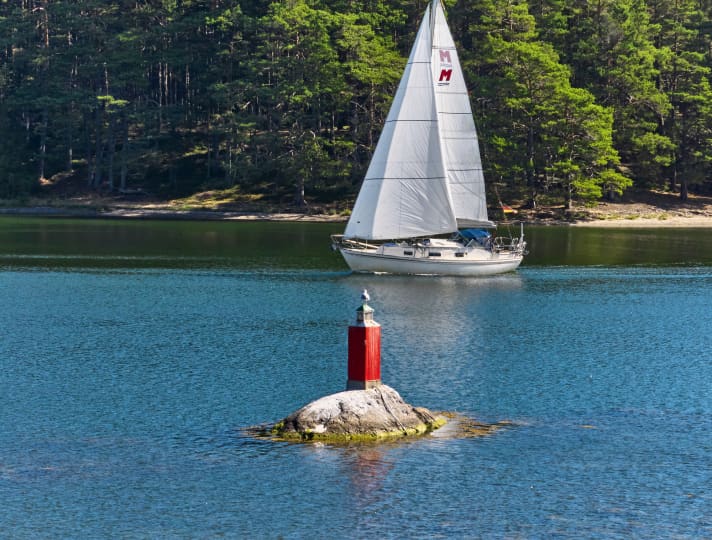
24 Nynäshamn: Springboard to Stockholm
The Swedish city has everything that is important for sailors on a cruise. In addition to shopping centres and small boutiques, there are numerous cafés and places to eat and drink. There are also fish restaurants, pubs and a bakery right in the harbour.
In the town's large guest harbour, the yachts are moored at stern buoys or alongside the protective piers that mark out the ferry dock. The service area is modern and the harbour staff are very friendly and eager to help guests. Nynäshamn is also an excellent springboard to Stockholm, as the railway station is right next to the harbour and the train connections are closely timed. It takes just under 60 minutes to reach the centre of the capital - on your own keel, this would require many miles under engine.
Little archipelago basics
Season without traffic jams
When the central summer holidays in Sweden paralyse the country from mid-June to August, harbours, bays and jetties become very crowded. Those who appreciate solitude should choose an alternative period for their cruise. In September it can still be warm, the water temperature pleasant and the wind moderate, before it becomes uncomfortable in late autumn.
Mooring to the rock
The most beautiful way to enjoy the landscape. Just one step ashore from the bow and you're in the middle of nature. A stern anchor, rock hook, hammer and long lines are obligatory. A bow ladder improves comfort. Or anchor freely in the bays or between the skerries and cross over with a dinghy or SUP. There are around 150 blue mooring buoys along the coast, which members of the Svenska Kryssarklubben (SXK) are authorised to use. Germans can become members ( www.sxk.se/ ) and must register; use is legitimised with a stander and annual flag. If possible, do not use trees as mooring lines.
Safely through the archipelago
The fairways in the inner archipelago are usually well buoyed or bouldered and allow safe passage even in heavy weather due to the land protection. Individual courses through the archipelago, along steeply sloping granite cliffs, are an unforgettable adventure. Paper and pixel nautical charts must of course be kept in front of you at all times, and it is best if a crew member concentrates on following the route.
Landfall for everyone
In the Swedish countryside, walkers are allowed to go almost anywhere thanks to everyman's right ("Aallemansrätt"). This is an integral part of Swedish culture. However, fenced-in private land is taboo and open fires are only permitted in designated areas. All rubbish must of course be taken away with you. Sweden is a tick area and TBE immunisation is advisable. Mosquito nets for the hatches are important.
Literature & Charts
- "Hamnguiden 7 and 8" from the Skagerrak publishing house (in Swedish, but easy to translate using the app).
- "Cruising Guide Sweden 2" by H. and G. Claußen, Delius Klasing Verlag.
- Recreational boating chart set 12: "East Coast Sweden 2" Delius Klasing Verlag.

